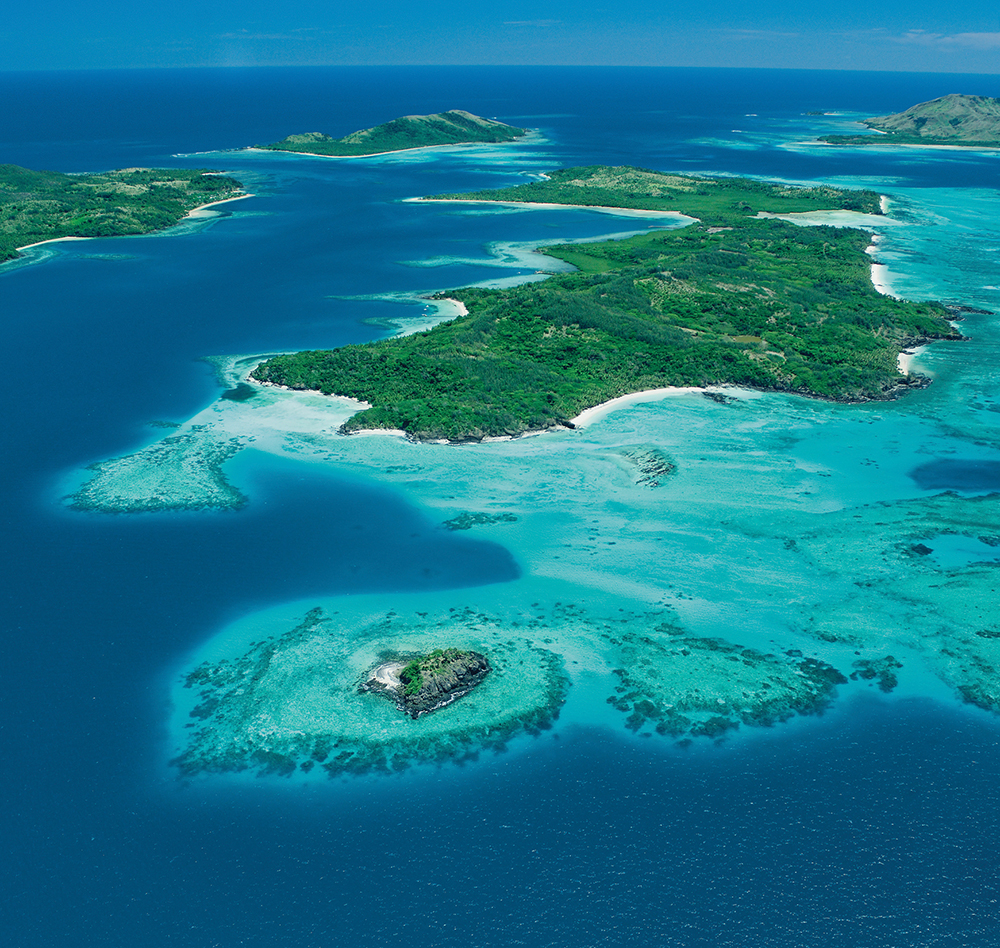Turtle Island makes the impossible seem possible.
It is a resort that feels like coming home, a private island that becomes your very own nature sanctuary. Turtle Island is an experience, more than it is a trip. It is a village. A family. A place you want to return to, again and again.
Turtle Island, in fact, is a little bit like “Fantasy Island,” with the enigmatic host and proclaimed Master of Ceremonies, Mr. Roark presiding over all of your dreams. Because they always seem to say “yes” on Turtle Island. Except that it’s not Ricardo Montalbán of Fantasy Island presiding over this remote island paradise in the beautiful Yasawan Island group of Fiji. No, here on Turtle Island his name is Arthur and he is Fijian; his hospitality so genuine and his joy so infectious that you want to record his laughter and make it your ringtone when you get back home to your real life.
And maybe you do—and, trust me, the winter is brighter because of it. Then, slowly and without even realizing it, you begin to live the very tagline that seemed like marketing before you experienced a week on Turtle Island but now is simply a part of your being: “Once visited, never forgotten.” Because Turtle Island is truly paradise found and as soon as you visit, you find yourself scheming for ways to get back.
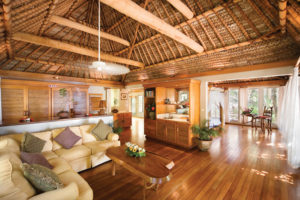
But how to explain it to the uninitiated? Perhaps it is best to start with your bure mama. Accommodations on Turtle Island are in “bures,” traditional thatched cottages built by Fijian craftsmen. Your bure mama is like having your own personal concierge, dedicated to you and only you. But she is so much more than a concierge. Your bure mama keeps your room tidy, your beverage fridge stocked and snacks ready (the dessert snack tray with brownies was heavenly). She brings you breakfast in bed (lobster, fresh fruit and mimosas), thoughtfully plans all your activities like an afternoon of snorkeling, a full day of deep sea fishing, a private dinner for two at Vonu Point or a sunrise horseback ride with breakfast on the beach. She even suggests, perhaps, when to plan nothing at all … and just like Tinker Bell, she scatters hibiscus flowers like pixie dust in her wake. By the end of the week, we considered her family and would have loved to take her, and any number of the staff home with us to show them our world and share a slice of the mountains with them, just as they had shared their island paradise and culture with us.
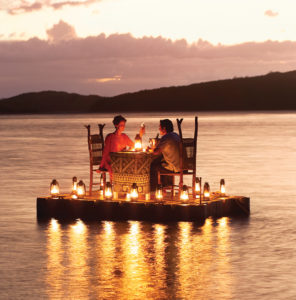 Turtle Island came about as an exclusive tropical resort almost by accident. It all started with Harvard Business School graduate Richard Evanson, an entrepreneur on the fast track to success who made his fortune in cable television. In 1972, Evanson was burnt out from the pressures of corporate life and took a hiatus from his business dealings to search for an escape from the world he had created in America. He found it in the Fiji Islands. He purchased Nanuya Levu, a 500-acre barren, uninhabited island in the Yasawa Islands and the rest, as they say, is history. Shortly after purchasing Nanuya Levu, Evanson was approached by film producers who had searched the world for the perfect location to stage their remake of “The Blue Lagoon” starring Brooke Shields and Christopher Atkins. They wanted to use his island to film the movie. Evanson agreed and, after realizing how much he enjoyed having people on the island who appreciated its beauty as much as he did, he decided to open the property to guests in 1980 and Nanuya Levu was renamed Turtle Island.
Turtle Island came about as an exclusive tropical resort almost by accident. It all started with Harvard Business School graduate Richard Evanson, an entrepreneur on the fast track to success who made his fortune in cable television. In 1972, Evanson was burnt out from the pressures of corporate life and took a hiatus from his business dealings to search for an escape from the world he had created in America. He found it in the Fiji Islands. He purchased Nanuya Levu, a 500-acre barren, uninhabited island in the Yasawa Islands and the rest, as they say, is history. Shortly after purchasing Nanuya Levu, Evanson was approached by film producers who had searched the world for the perfect location to stage their remake of “The Blue Lagoon” starring Brooke Shields and Christopher Atkins. They wanted to use his island to film the movie. Evanson agreed and, after realizing how much he enjoyed having people on the island who appreciated its beauty as much as he did, he decided to open the property to guests in 1980 and Nanuya Levu was renamed Turtle Island.
Turtle Island is not just about the pristine white sand beaches, the perfect temperature (a constant 80º to 86º F) or the clear azure waters teeming with fish dropped like coins through sunlight.
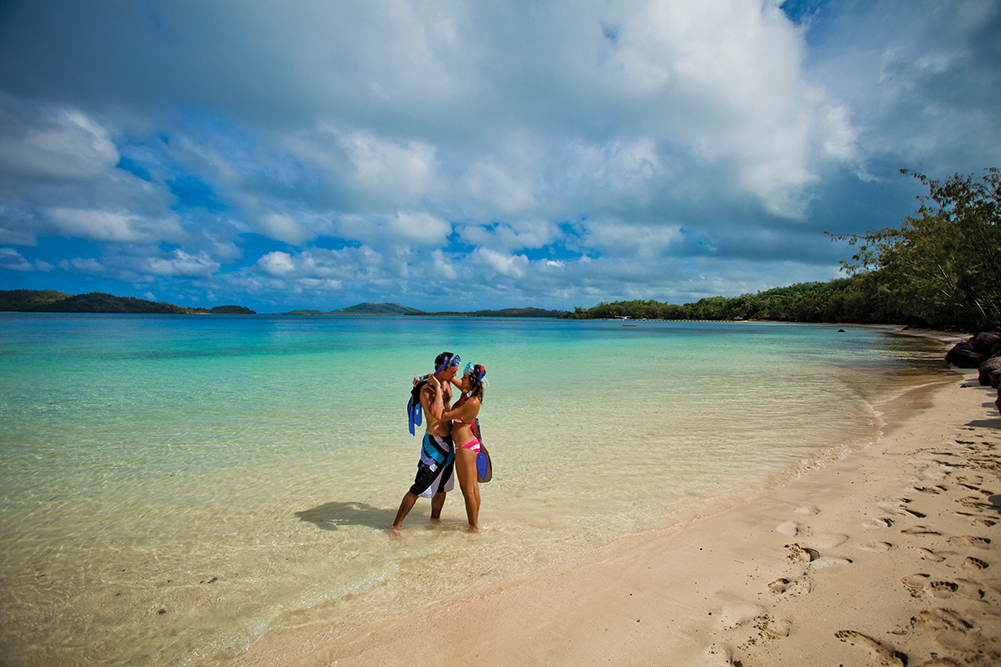
There is no denying the breathtaking and postcard perfect beauty of the islands of the Republic of Fiji—a string of 333 ancient volcanic islands and lagoons carved from lava and coral and scattered across 20,000 square miles of the sparkling blue South Pacific. And the Yasawan Island group, arcing north up the western coast of Fiji, of which Turtle Island is a part, is one of the most remote and untouched of all the islands—with land-based tourism activities restricted until as recently as 1987, when a government-sponsored ecotourism startup fund promoted responsible and sustainable travel (and Turtle Island is the proud recipient of more than six international ecotourism awards for their solar power, five-acre vegetable and herb garden and a reforestation program that has seen the planting of over 500,000 trees over the last 40 years).
The island has also been called the most intimate and romantic private island destination in the world. And with only 14 bures, along with 14 pristine powdery white sand beaches scattered around the 500-acre island, privacy is all but guaranteed. Reserve your own private beach and your bure mama delivers you to it with a picnic of lobster and champagne. There are no rules and no schedule, the day is yours to unfold as you wish and how you wish.
And the experience of Turtle Island is not just about the fact that every single member of the staff is smiling and laughing and happy to meet your every single need. Or the fact that all the activities are included—everything from paddle boarding and kayaking to sailing, hiking, biking, scuba diving, snorkeling and deep sea fishing. Truly it is like staying at the home (the fully staffed home) of your favorite family friend. We stuffed our wallet and ID in the safe and never looked at them again until boarding the seaplane back to Nadi. We unplugged and unwound and greeted everybody by first name.
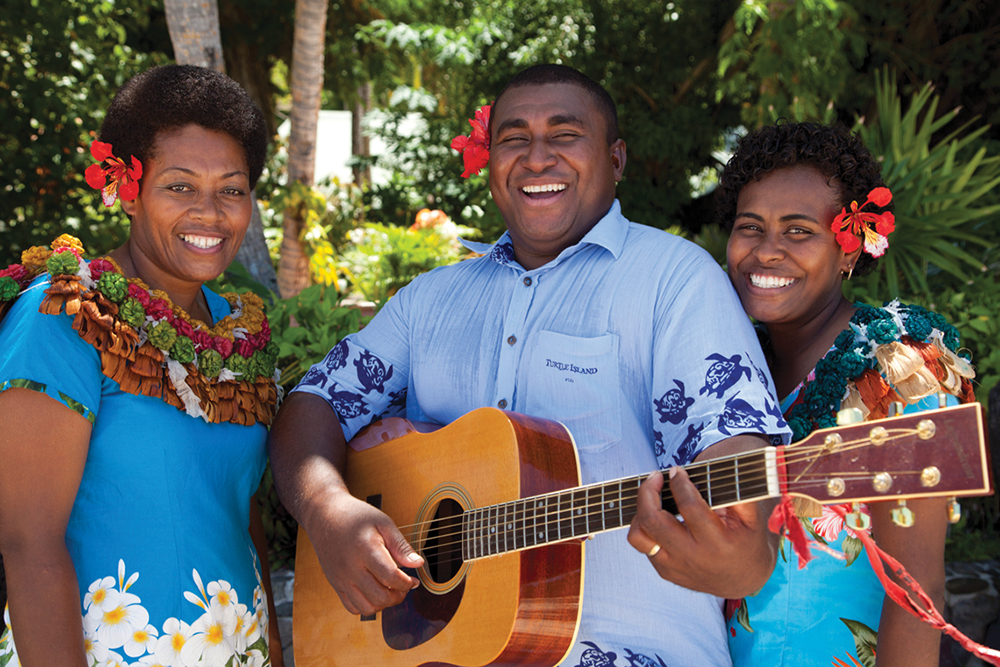
But the true beauty of Turtle Island reaches beyond the activities, the relaxed island attitude and the endless days of sunshine and tropical breezes. It is about the spaces in between: The laughter, the stories, the impromptu dancing and shared time together. It is captured in an afternoon with a hammock and the perfect picnic built for two in a deserted cove with a private beach facing nothing but the Eastern Trade Winds. It lives beneath a sky thrown with stars and kissed by the ocean, observed from a swaying hammock at midnight. And it is the memory of our guide, Arthur, the Fijian version of Fantasy Island’s Mr. Roark, singing to himself while snorkeling amidst a perfect turquoise sea tossed with strawberry coral and teeming with fish of every shape and color.
Because this sums up the experience of Turtle Island and the Fijian people. It is moments of pure joy strung together like a necklace of shells or tucked behind the ear like a hibiscus flower. And this is why your ringtone features the laughter of a man from the village of Matacawelu in the remote Yasawan Islands of Fiji. And it is also why you dream of returning as soon as you possibly can.
TURTLE ISLAND DETAILS
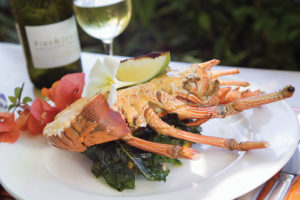 How To Get There: For over 60 years, FIJI Airways has been connecting the world with Fiji. Service is attentive and courteous and it’s an easy direct flight from Los Angeles. You board at night, dine, then sleep for 7-8 hours and arrive refreshed in the morning. www.fijiairways.com or 1-800-227-4446.
How To Get There: For over 60 years, FIJI Airways has been connecting the world with Fiji. Service is attentive and courteous and it’s an easy direct flight from Los Angeles. You board at night, dine, then sleep for 7-8 hours and arrive refreshed in the morning. www.fijiairways.com or 1-800-227-4446.
When To Go: It truly is beautiful all year—the average summer temp is 88ºF, with the average winter temp only dropping to a balmy 83ºF, so you can’t go wrong. Fiji’s winter runs from June to September and is considered the dry season, bringing fairly steady trade winds. The somewhat warmer and more humid summer season runs October through April and can bring the occasional tropical storm or cyclone. The spring or fall solstice is a great time to book a trip, as is any full moon.
Room With a View: To really splurge, book the Vonu Point bure. Perched above the spectacular Blue Lagoon, it enjoys total privacy and breathtaking panoramic views (rumored to have been the honeymoon retreat for Britney Spears and Kevin Federline after their 2004 wedding).
Things To Do: Scuba diving along Fiji’s famous reefs, snorkeling, sport fishing, horseback riding on the beach, mountain biking, sunset cruises, sailing, kayaking, windsurfing and paddle boarding activities. Private beach picnics, romantic dine-out meals, facials, massage and tours of the island provide more relaxing options. Fiji’s legendary surf breaks are not in the Yasawan group but are located further to the east and south, around Viti Levu and the southern Mamanuca island chain—although most of these are reef breaks suitable for experienced and expert surfers only. You can surf year round, but Fiji’s winter brings the most consistent swells.


